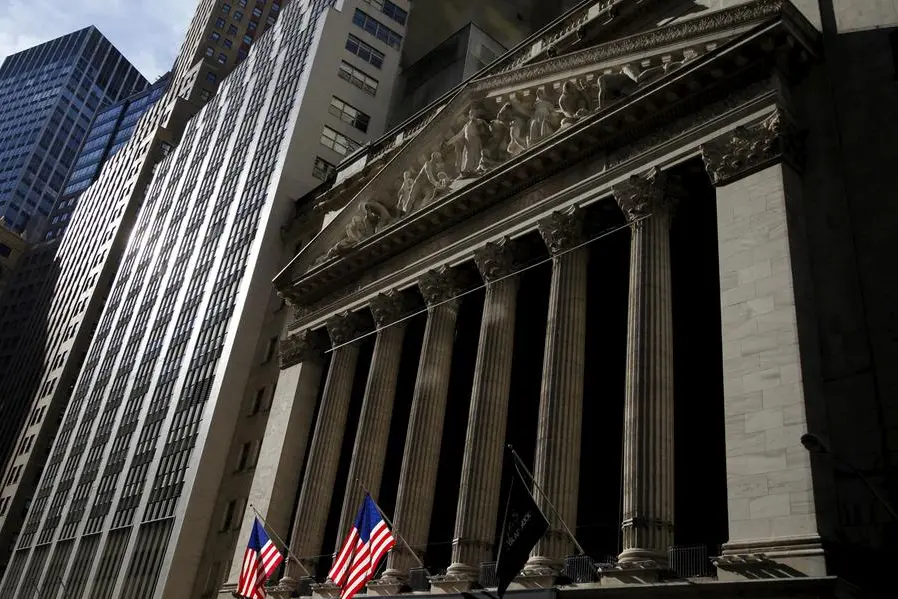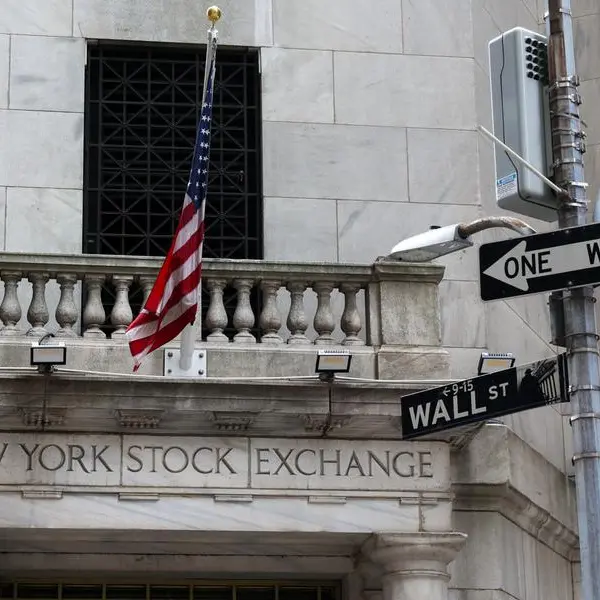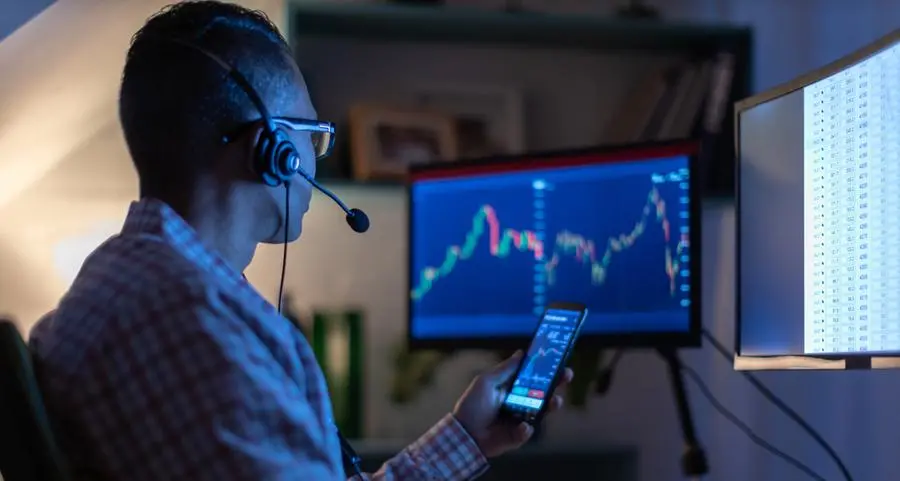PHOTO
FILE PHOTO: The New York Stock Exchange building is seen from Broad Street in Lower Manhattan in New York, January 20, 2016. Wall Street moved deep into the red on Wednesday, with the S&P 500 hitting its lowest since February 2014 and extending this year's selloff as oil prices continued to plummet unabated. REUTERS/Mike Segar/File Photo
US stock markets have delivered a trading bonanza for investors betting on dispersion – a complex derivatives strategy that profits from share prices heading in different directions – after a breakdown in the long-held dynamic of equities moving largely in lockstep. The question is whether these trades could now come unstuck amid signs that volatility is on the rise again across US markets.
S&P 500 correlation recently hit its lowest level in 30 years, according to UBS, as gains from sectors like healthcare and consumer staples offset a stuttering performance from the benchmark’s mega-cap technology companies. That unusual backdrop has encouraged investors to pile into dispersion trades, bankers say, which have produced meaty returns thanks to a sustained rise in single-stock volatility.
It has also prompted warnings from analysts about rock-bottom correlation levels often preceding wider market selloffs – a scenario that could upend some of these increasingly crowded positions.
Dispersion trades are now facing a real-life stress test as broad-based market volatility has increased in recent sessions amid mounting concerns over US economic growth and Donald Trump's administration imposing tariffs on imports from Mexico, Canada and China.
“As we’ve seen the profitability of the dispersion trade go up, we’ve seen more crowding,” said Garrett DeSimone, head of quantitative research at data provider OptionMetrics.
“One of the issues is that [dispersion] does carry a pretty significant left tail [risk], similar to any short vol position. If you get a spike in correlations, this trade is going to blow up," he said.
"We saw the beginnings of that last August,” he added, referring to the day Wall Street’s “fear gauge”, the VIX, surged to a four-year high of 66 points following a more than 12% drop on August 5 in the Nikkei 225 index of Japanese shares.
A sustained decline in S&P 500 correlation over the past two years has helped keep headline equity volatility subdued – at least until recently – even as individual stock prices have been moving in wildly different directions.
The VIX, which measures the price of S&P 500 options, only briefly flickered above 20 points on January 27 – the day that concerns over China’s DeepSeek AI programme wiped US$1trn off the value of US tech stocks. That’s because gains from other sectors dampened the effect of the tech meltdown on the S&P 500, which only fell 1.5% that day, as healthcare, real estate and financial stocks rose.
Perfect backdrop
The diverging fortunes of different industries and companies has provided the perfect backdrop for dispersion, first popularised in the early 2000s but which lost its allure in the following decade when central banks quashed volatility through quantitative easing programmes.
It’s been “an exceptionally good environment for anyone running a dispersion book,” Kieran Diamond, volatility strategist at UBS, said in an interview with IFR a few days before the recent market selloff. “The entry levels for dispersion are elevated, but these trades remain profitable and we continue to see strong appetite from people to do that.”
Dispersion trades assume a variety of different flavours but typically involve taking a short volatility position on an index like the S&P 500 through selling options, while taking a long volatility position on individual stocks within that index by buying options. These bets pay off as long as the individual stocks prove more volatile than the broader index.
Once the preserve of specialist hedge funds, banks have created and sold huge volumes of pre-packaged “quantitative investment strategies” in recent years that do this for investors, bringing dispersion to a much wider audience.
“The major change is banks offering QIS strategies that have democratised access to dispersion,” said Julien Turc, head of the QIS lab at BNP Paribas. “You no longer need to be a specialised hedge fund with all the necessary traders and infrastructure to do this trade."
Even as dispersion investors have been making hay this year, some strategists warn that the prevailing market dynamic could also be a harbinger of looming danger. Bank of America equity derivatives strategists wrote in a recent report that “record low” correlation had kept a lid on S&P volatility and left it “exceptionally sensitive” to any exogenous macro shocks that cause stocks to return to moving in lockstep.
Index volatility would triple if stock volatility and correlation reacted like they did during the notorious collapse of hedge fund Long Term Capital Management in 1998, BofA said.
Diamond said extremely low correlation levels could be seen as a sign of complacency around macro risks. “Correlation getting down to very low levels has historically been a precursor to volatility rising and weaker returns in equity markets,” he said. “Our house view is that there are meaningful downside risks to the US growth outlook, but people are trading as if it’s a micro market, purely focusing on sectors and stocks. That can change very quickly, as we saw last summer.”
Correlation shock
Dispersion traders will be sitting a little less comfortably following recent market moves. Correlation usually jumps – and dispersion strategies founder – when there is a structural shift that causes stocks to sell off en masse.
The S&P 500's main subsectors have all fallen in the wake of Trump's tariff announcement and had wiped out the index's post-election gains as of Tuesday's close – and pushed the VIX back above 20 points.
Three-month implied correlation has roughly doubled since late January to 22%, according to Cboe, the highest level since September but still far below the roughly 50% watermark two years earlier.
"When you get a sustained period of higher correlations, and you don't get this immediate mean reversion of the VIX, that's when you'll start to see the dominos fall," said DeSimone.
Some warn that the most common approach to dispersion, known as “vega-flat”, is particularly vulnerable to a sustained rise in correlation. These strategies tend to be more profitable because they involve selling larger amounts of index options, which generate premiums, but that feature also leaves them vulnerable to a blow out in market-wide volatility.
“When correlation is low, index options are relatively cheap versus single names, so why sell them at a low price?” said Turc. “Gamma-flat” strategies, which involve selling less index volatility, are “more prudent", he said.
Prior to the recent selloff, one senior bank trader said entry points for dispersion trades had been "probably at one of the most challenging levels over the past decade".
“[People have been] wary of correlation normalising and that leading to significant losses,” the trader said.























